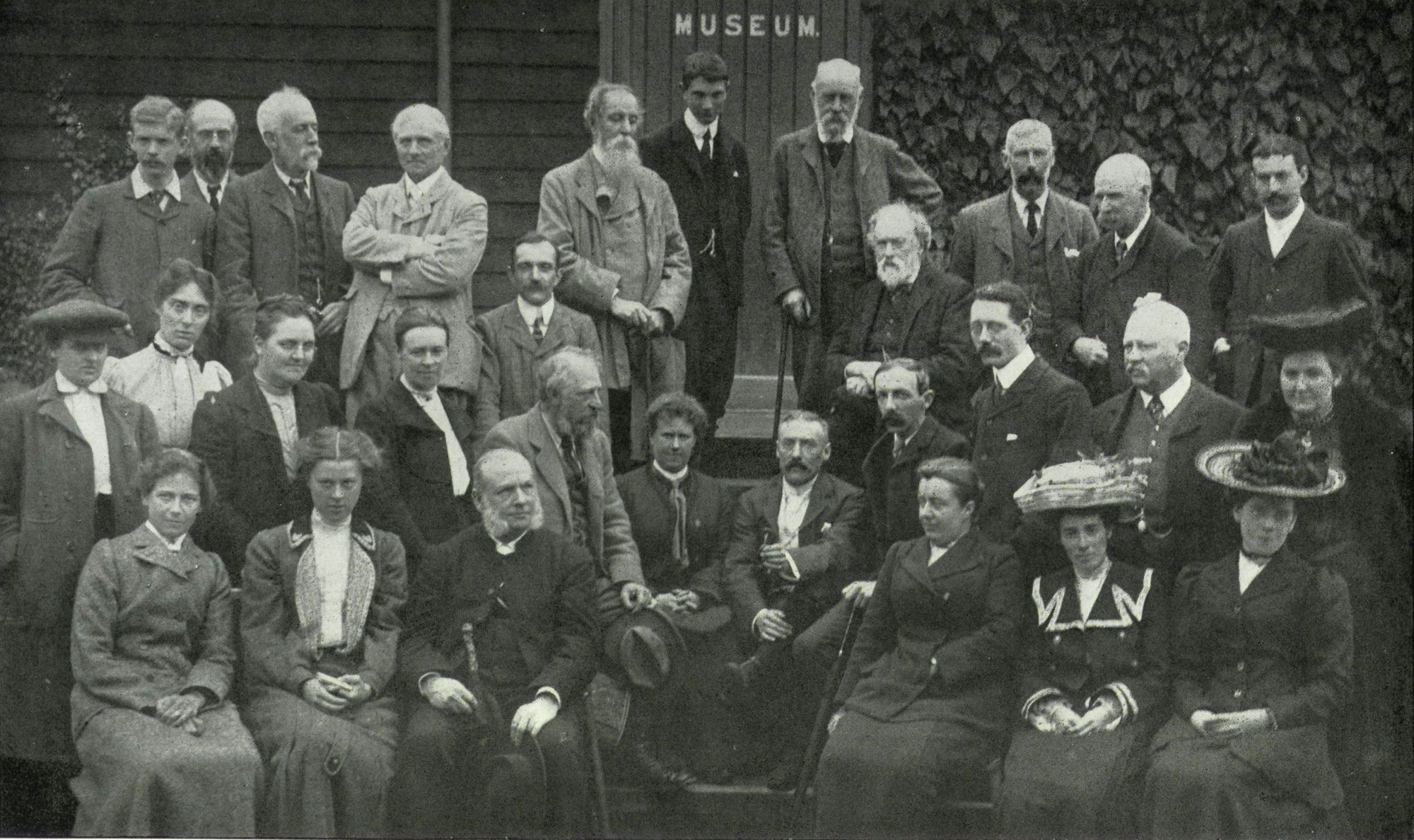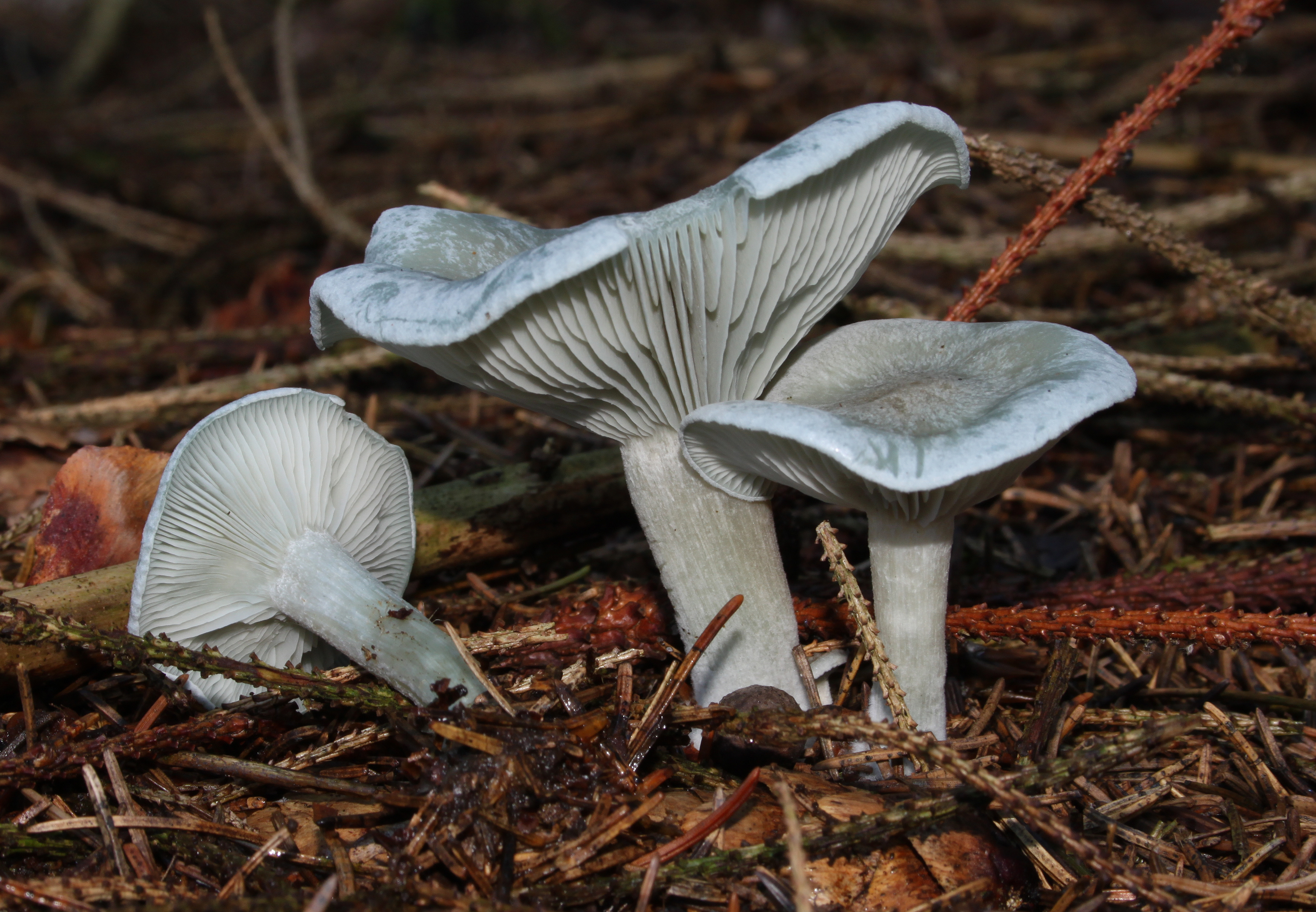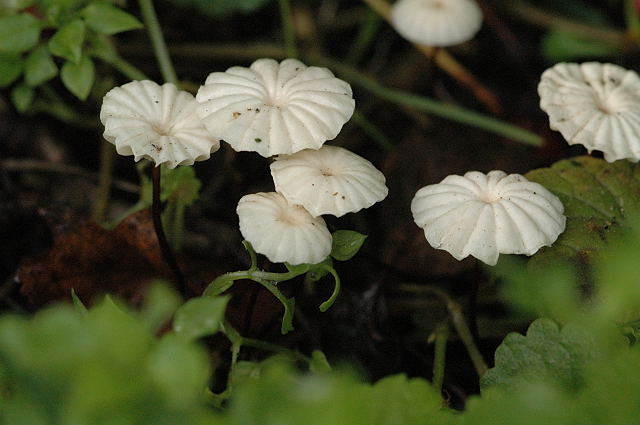|
David Pegler
David Norman Pegler (born 2 November 1938) is a British mycologist. Until his retirement in 1998, he served as the Head of Mycology and assistant keeper of the herbarium at the Royal Botanic Gardens in Kew. Pegler received his BSc from London University in 1960, thereafter studying tropical Agaricales with R.W.G. Dennis as his graduate supervisor. He earned a master's degree in 1966, and a PhD in 1974 (both from London University). His graduate thesis was on agarics of east Africa, later published as ''A preliminary agaric flora of East Africa'' in 1977. In 1989, London University awarded him a DSc for his research into the Agaricales. A fungal genus '' Pegleromyces'' (family Tricholomataceae) published in 1981 by Rolf Singer, then genera ''Peglerochaete'' from India, (also in the family Tricholomataceae) by Sarwal & Locq. in 1983, and also several other fungal taxa have been named in his honour: *''Cuphophyllus pegleri'' Lodge 1999 *'' Deconica pegleriana'' (Guzmán) Ram.-Cruz & ... [...More Info...] [...Related Items...] OR: [Wikipedia] [Google] [Baidu] |
Mycologist
Mycology is the branch of biology concerned with the study of fungus, fungi, including their genetics, genetic and biochemistry, biochemical properties, their Taxonomy (biology), taxonomy and ethnomycology, their use to humans, including as a source for tinder, traditional medicine, Edible mushroom, food, and entheogens, as well as their dangers, such as poison, toxicity or fungal infection, infection. A biologist specializing in mycology is called a mycologist. Mycology branches into the field of phytopathology, the study of plant diseases, and the two disciplines remain closely related because the vast majority of plant pathogens are fungi. Overview Historically, mycology was a branch of botany because, although fungi are evolutionarily more closely related to animals than to plants, this was not recognized until a few decades ago. Pioneer mycologists included Elias Magnus Fries, Christian Hendrik Persoon, Anton de Bary, Elizabeth Eaton Morse, and Lewis David von Schweinitz ... [...More Info...] [...Related Items...] OR: [Wikipedia] [Google] [Baidu] |
Favolaschia Pegleri
''Favolaschia'' is a genus of fungi in the family Mycenaceae. The genus has a widespread distribution, and contains about 50 species. Like the genus Favolus, the name is derived from the Latin ''favus'' meaning ''honeycomb'', as the fungi with the large pores on the underside are resembling a honeycomb. The name was first published as a section of the obsolete genus ''Laschia'', which was named after Wilhelm Gottfried Lasch (1787-1863), who was a German apothecary and botanist. Species *'' Favolaschia alsophilae'' *'' Favolaschia amoene-rosea'' *'' Favolaschia andina'' *'' Favolaschia aulaxina'' *'' Favolaschia aurantiaca'' *'' Favolaschia auriscalpium'' *'' Favolaschia austrocyatheae'' *'' Favolaschia calamicola'' *'' Favolaschia calocera'' *'' Favolaschia citrina'' *'' Favolaschia cyatheae'' *'' Favolaschia dumontii'' *'' Favolaschia dybowskyana'' *'' Favolaschia echinata'' *'' Favolaschia fendleri'' *'' Favolaschia fujisanensis'' *'' Favolaschia furfurella'' *'' Favolaschia g ... [...More Info...] [...Related Items...] OR: [Wikipedia] [Google] [Baidu] |
British Mycologists
British may refer to: Peoples, culture, and language * British people, nationals or natives of the United Kingdom, British Overseas Territories, and Crown Dependencies. ** Britishness, the British identity and common culture * British English, the English language as spoken and written in the United Kingdom or, more broadly, throughout the British Isles * Celtic Britons, an ancient ethno-linguistic group * Brittonic languages, a branch of the Insular Celtic language family (formerly called British) ** Common Brittonic, an ancient language Other uses *''Brit(ish)'', a 2018 memoir by Afua Hirsch *People or things associated with: ** Great Britain, an island ** United Kingdom, a sovereign state ** Kingdom of Great Britain (1707–1800) ** United Kingdom of Great Britain and Ireland (1801–1922) See also * Terminology of the British Isles * Alternative names for the British * English (other) * Britannic (other) * British Isles * Brit (other) * B ... [...More Info...] [...Related Items...] OR: [Wikipedia] [Google] [Baidu] |
1938 Births
Events January * January 1 ** The Constitution of Estonia#Third Constitution (de facto 1938–1940, de jure 1938–1992), new constitution of Estonia enters into force, which many consider to be the ending of the Era of Silence and the authoritarian regime. ** state-owned enterprise, State-owned railway networks are created by merger, in France (SNCF) and the Netherlands (Nederlandse Spoorwegen – NS). * January 20 – King Farouk of Egypt marries Safinaz Zulficar, who becomes Farida of Egypt, Queen Farida, in Cairo. * January 27 – The Honeymoon Bridge (Niagara Falls), Honeymoon Bridge at Niagara Falls, New York, collapses as a result of an ice jam. February * February 4 ** Adolf Hitler abolishes the War Ministry and creates the Oberkommando der Wehrmacht (High Command of the Armed Forces), giving him direct control of the German military. In addition, he dismisses political and military leaders considered unsympathetic to his philosophy or policies. Gene ... [...More Info...] [...Related Items...] OR: [Wikipedia] [Google] [Baidu] |
List Of Mycologists ...
This is a non-exhaustive list of mycologists, or scientists with a specialisation in mycology, with their author abbreviations. Because the study of lichens is traditionally considered a branch of mycology, lichenologists are included in this list. Further reading * * * * * References Bibliography * {{refend Mycology Mycology is the branch of biology concerned with the study of fungi, including their genetic and biochemical properties, their taxonomy and their use to humans, including as a source for tinder, traditional medicine, food, and entheogens, as ... [...More Info...] [...Related Items...] OR: [Wikipedia] [Google] [Baidu] |
Mycologist (journal)
The British Mycological Society is a learned society established in 1896 to promote the study of fungi. Formation The British Mycological Society (BMS) was formed by the combined efforts of two local societies: the Woolhope Naturalists' Field Club of Hereford and the Yorkshire Naturalists’ Union. The Curator of the Hereford Club, Dr. H. G. Bull, convinced the members in 1867 to undertake the particular study of mushrooms. While the mycological efforts of the Club diminished somewhat after Dr. Bull's death, the Union of Yorkshire founded its Mycological Committee in 1892. This Committee attracted the involvement of many eminent mycologists including George Edward Massee (1845–1917), James Needham (1849–1913), Charles Crossland (1844-1916), and Henry Thomas Soppitt (1843-1899). Mycologist Kathleen Sampson was a member for sixty years, as well as serving as president in 1938. The need for a national organisation and the need for a journal to publish their observation ... [...More Info...] [...Related Items...] OR: [Wikipedia] [Google] [Baidu] |
Managing Editor
A managing editor (ME) is a senior member of a publication's management team. Typically, the managing editor reports directly to the editor-in-chief and oversees all aspects of the publication. United States In the United States, a managing editor of a newspaper, magazine or other periodical publication oversees and coordinates the publication's editorial activities. The managing editor can hire, fire, or promote staff members. Other responsibilities include creating and enforcing deadlines. Most section editors will report to the managing editor. The ME must enforce policies set by the editor in chief. It is their job to approve stories for print or final copy. On matters of controversy, the ME decides whether to run controversial pieces. At a newspaper a managing editor usually oversees news operations while opinion pages are under separate editors. In trade book publishing, the managing editor is typically a senior executive in the production department, responsible for overall ... [...More Info...] [...Related Items...] OR: [Wikipedia] [Google] [Baidu] |
Systematics
Biological systematics is the study of the diversification of living forms, both past and present, and the relationships among living things through time. Relationships are visualized as evolutionary trees (synonyms: cladograms, phylogenetic trees, phylogenies). Phylogenies have two components: branching order (showing group relationships) and branch length (showing amount of evolution). Phylogenetic trees of species and higher taxa are used to study the evolution of traits (e.g., anatomical or molecular characteristics) and the distribution of organisms (biogeography). Systematics, in other words, is used to understand the evolutionary history of life on Earth. The word systematics is derived from the Latin word '' systema,'' which means systematic arrangement of organisms. Carl Linnaeus used 'Systema Naturae' as the title of his book. Branches and applications In the study of biological systematics, researchers use the different branches to further understand the relationshi ... [...More Info...] [...Related Items...] OR: [Wikipedia] [Google] [Baidu] |
Clitocybe Pegleri
''Clitocybe'' is a genus of mushrooms characterized by white, off-white, buff, cream, pink, or light-yellow spores, gills running down the stem, and pale white to brown or lilac coloration. They are primarily saprotrophic, decomposing forest ground litter. There are estimated to be around 300 species in the widespread genus. ''Clitocybe'' means ''sloping head''. A few members of the genus are considered edible; many others are poisonous, containing the toxin muscarine among others. Distinguishing individual species of ''Clitocybe'' is generally prohibitively difficult to non-experts, requiring the analysis of microscopic characters. Therefore, with the exception of a few charismatic and readily identified members, ''Clitocybe'' mushrooms are rarely collected for consumption. Taxonomy ''Clitocybe'' was originally proposed by Elias Fries in 1821 as a tribe in the genus ''Agaricus''. Friedrich Staude elevated it to generic status in 1857. Recent molecular work has shown the genus ... [...More Info...] [...Related Items...] OR: [Wikipedia] [Google] [Baidu] |
Melanospora Pegleri
''Melanospora'' is a genus of fungi within the Ceratostomataceae family. Species *'' Melanospora aculeata'' *'' Melanospora affine'' *''Melanospora angulosa'' *'' Melanospora anomala'' *'' Melanospora antarctica'' *'' Melanospora arachnophila'' *'' Melanospora arenaria'' *'' Melanospora argadis'' *'' Melanospora asclepiadis'' *''Melanospora asparagi'' *'' Melanospora asperrima'' *'' Melanospora aurea'' *'' Melanospora betae'' *''Melanospora brevirostrata'' *''Melanospora brevirostris'' *''Melanospora bromelifoliae'' *''Melanospora camelina'' *''Melanospora caprina'' *''Melanospora cervicula'' *''Melanospora chionea'' *''Melanospora chrysomella'' *''Melanospora coemansii'' *''Melanospora collipora'' *'' Melanospora coprophila'' *'' Melanospora curvicola'' *'' Melanospora damnosa'' *'' Melanospora endobiotica'' *'' Melanospora epimyces'' *'' Melanospora erythraea'' *'' Melanospora exsola'' *'' Melanospora fallax'' *'' Melanospora fayodi'' *'' Melanospora fimbriata'' *'' Melanospora ... [...More Info...] [...Related Items...] OR: [Wikipedia] [Google] [Baidu] |
Marasmius Pegleri
''Marasmius'' is a genus of mushroom-forming fungi in the family Marasmiaceae. It contains about 500 species of agarics, of which a few, such as ''Marasmius oreades'', are edible. However, most members of this genus are small, unimpressive brown mushrooms. Their humble appearance contributes to their not being readily distinguishable to non-specialists, and they are therefore seldom collected by mushroom hunters. Several of the species are known to grow in the characteristic fairy ring pattern. The author of the genus was Elias Magnus Fries, who in 1838 classified white-spored agarics having a tough central stipe in this taxon if they were marcescent, i.e. they could dry out but later revive when moistened. For Fries, marcescence — by contrast with the " putrescent" (decomposing) nature of most mushrooms — was an important character for classification, which he used to separate this group from genus ''Collybia'' (which has now been split into many newer gener ... [...More Info...] [...Related Items...] OR: [Wikipedia] [Google] [Baidu] |
Lactarius Pegleri
''Lactarius'' is a genus of mushroom-producing, ectomycorrhizal fungi, containing several edible species. The species of the genus, commonly known as milk-caps, are characterized by the milky fluid ("latex") they exude when cut or damaged. Like the closely related genus ''Russula'', their flesh has a distinctive brittle consistency. It is a large genus with over 500 known species, mainly distributed in the Northern hemisphere. Recently, the genus ''Lactifluus'' has been separated from ''Lactarius'' based on molecular phylogenetic evidence. Systematics and taxonomy The genus ''Lactarius'' was described by Christian Hendrik Persoon in 1797 with '' L. piperatus'' as the original type species. In 2011, '' L. torminosus'' was accepted as the new type of the genus after the splitting-off of ''Lactifluus'' as separate genus. The name "''Lactarius''" is derived from the Latin ''lac'', "milk". Placement within Russulaceae Molecular phylogenetics uncovered that, while macromorphologic ... [...More Info...] [...Related Items...] OR: [Wikipedia] [Google] [Baidu] |






